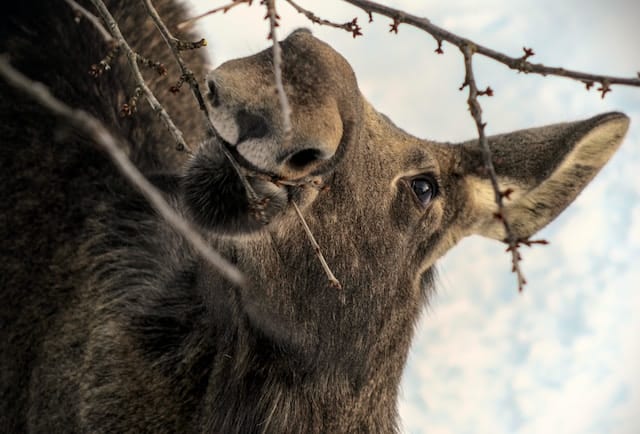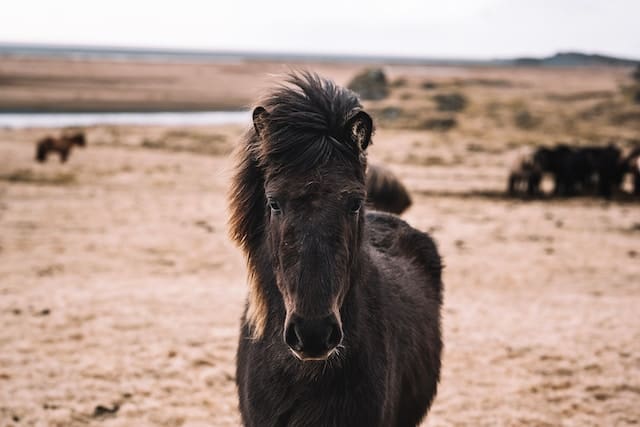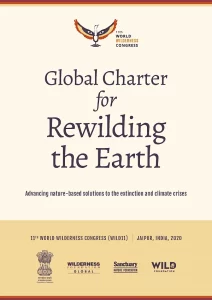What is Rewilding?
Definition of rewilding
Rewilding is the process of restoring and protecting natural ecosystems, and allowing them to develop and function without human intervention.
This can include the reintroduction of lost, native species, such as large herbivores and apex predators, the removal of non-native species, and allowing natural processes to promote self-regulating ecosystems and maintain trophic balance. The goal of rewilding is to foster self-sustaining, biodiverse landscapes that enhance ecosystem resilience, support wildlife populations, and restore essential ecological functions.

Rewilding aims to restore three key ecological processes
Connectivity
Improved connection in landscapes supports wildlife movement and genetic exchange. It facilitates shifts in the ranges of plants and animals in response to climate change and other environmental threats.

Self-regulation
Ultimately, rewilding is a form of ecological restoration with an emphasis on humans stepping back and leaving an area to nature, as opposed to more active forms of natural resource management.
Restoring connectivity and successful reintroduction of keystone species create a self-regulatory and self-sustaining, resilient ecosystem, with improved biodiversity and climate change mitigation impact
Read more about the Principles of Rewilding.
According to the IUCN, rewilding is:
“The process of rebuilding, following major human disturbance, a natural ecosystem by restoring natural processes and the complete or near complete food-web at all trophic levels as a self-sustaining and resilient ecosystem using biota that would have been present had the disturbance not occurred.”
Rewilding is dedomestication of nature
Ecosystem restoration involves a paradigm shift in the relationship between humans and nature. The ultimate goal of rewilding is: “the restoration of functioning native ecosystems complete with fully occupied trophic levels that are nature-led across a range of landscape scales“.
Rewilded ecosystems should be “self-sustaining requiring no or minimum-intervention management (i.e. natura naturans or “nature doing what nature does”), recognising that ecosystems are dynamic and not static“.
Rewilding can encompass a wide range of activities
- Natural Grazing and Predation Restoration – Reintroducing herbivores and apex predators to regulate ecosystems and maintain trophic balance.
- Habitat Connectivity Restoration – Creating wildlife corridors and green infrastructure to reconnect fragmented ecosystems, enabling species movement and genetic exchange.
- Waterway and Wetland Restoration – Re-meandering rivers, removing dams or barriers, restoring wetlands, and improving natural hydrology to support aquatic life and mitigate flooding.
- Passive Rewilding – Allowing land to recover naturally by reducing or ceasing human interventions such as logging, farming, or urban expansion.
- Traditional Ecological Knowledge Integration – Engaging Indigenous and local communities to incorporate traditional land stewardship and conservation practices.
- Climate Resilience Building – Enhancing carbon sequestration through afforestation, peatland restoration, and promoting climate-adaptive ecosystems.
- Agroforestry and Food Forests – Integrating trees, shrubs, and diverse plant species into agricultural systems to mimic natural ecosystems, enhance biodiversity, improve soil health, and create sustainable food production systems.
- Community Engagement and Ecotourism Development – Involving local communities in conservation efforts, promoting sustainable livelihoods, and fostering eco-friendly tourism.
Adapative management
Rewilding requires adaptive management, continuous learning and a dynamic approach that is updated regularly based on new insights. In heavily degraded land- and seascapes, humans may play a vital role in supporting nature’s recovery by removing barriers and kick-starting ecological processes.

megafauna Loss and ecosystem degradation
From the Late Pleistocene extinctions of terrestrial megafauna to the ongoing declines of terrestrial, marine, and freshwater large-bodied animals, vertebrates have been overexploited since the global expansion of modern humans (Homo sapiens). The largest land animals were extirpated first. It has become clear that the loss of wildlife worldwide, or defaunation, affects not only the iconic species but also the functions they have in ecosystems.
Recreating the past or shaping the future?
Neither. And both. Rewilding is a pathway, a process that is both past and future oriented.
To be successful, rewilding needs to be applied with a clear reference point and vision of the natural history of an area. Historical information spanning different temporal scales can provide ecological context for better understanding of present-day degraded ecosystems.
Unlike more traditional forms of conservation or nature restoration, rewilding does not have a clearly defined end point. It is not about restoring nature to a certain stage and then making sure that it stays that way.
Rewilding is about restoring natural processes, about establishing healthy and functioning ecosystems, containing the full range of species at all trophic levels, and allowing species and ecosystems to evolve over time.
Rewilding also needs to consider future trends in climate and other human induced changes. In order to assure the effectiveness of rewilding approaches across time and under changing conditions, we must analyse future biodiversity scenarios that account for individualistic species responses, community re-composition, and functional variation in ecosystems.
Global Charter for Rewilding the Earth
The Global Charter for Rewilding the Earth calls on individuals, communities, nongovernmental organizations, corporations, governments, and other institutions to advance efforts to protect remaining large wild areas and to support rewilding projects around the world.
“A global rewilding movement—embraced by the broadest spectrum of constituencies and encouraged by governmental policy—can ultimately weave wondrous blue and green ribbons of wildness that wrap the Earth in beauty, offering the promise of a better future, with freedom and habitat for all.”




